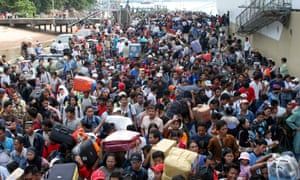Current Unit of study: Unit 2
Baby Shortage Imperils Japan's Economy
Synopsis
According to Government officials, more than 1 million babies were born last year in Japan. This so happens to be the lowest figure on record. This shows that the country has made little, if any effort in their battle against unfavorable demographic trends. Aside from this, Japan's health ministry estimated that 1,269,000 people died in 2014 meaning that the country's natural population had declined by 268,000. This rapidly shrinking population is extremely alarming. Some factors to blame include the declining number of marriages, the number of women holding jobs, and Japanese immigration. Should the population continue to decline in numbers, that would threaten to limit economic growth. Some are even going as far to suggest that Japan's population could shrink by a third over the next five years.
Analysis
Japan's population is taking a huge blow due to many different factors. So Japan's current situation is looking, shall we say, not good. Without the birth of more children, Japan's graying population holds most of the power. This is because the more older people there are, the more of a dependent population the country will have. This will lead to all of these elderly citizens to rely on those who are still able to work. And lets face it, that's not many. Japan's natural increase rate could even decline by a third over the course of the next 5 years. Meaning, the country's economy will suffer greatly. Of course, some of the major causes include the decline of marriages, education of women, and Japan's growing number of immigrants. Should this troublesome trend continue however, Japan's population pyramid with grow alarming in old age, and remain sparse with younger ages.
Link to the original article:
http://money.cnn.com/2015/01/02/news/economy/japan-baby-shortage/



